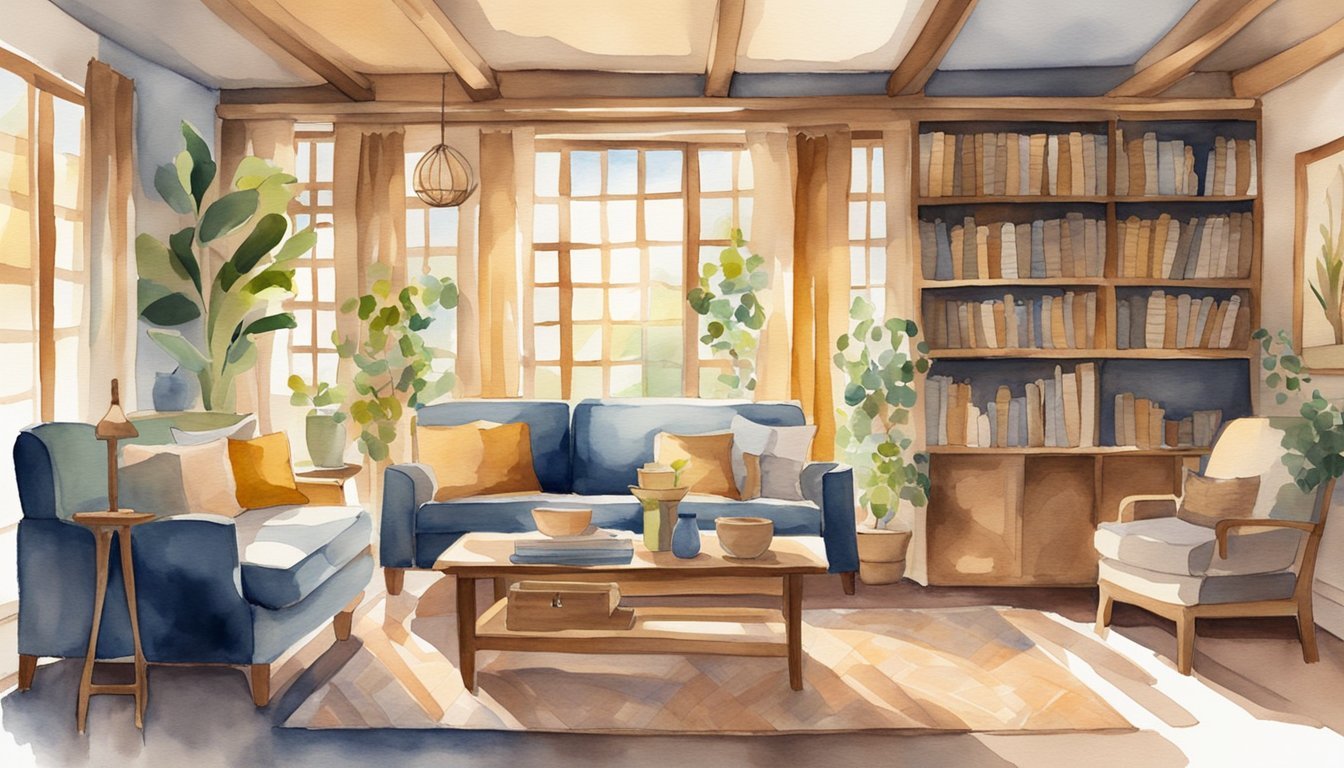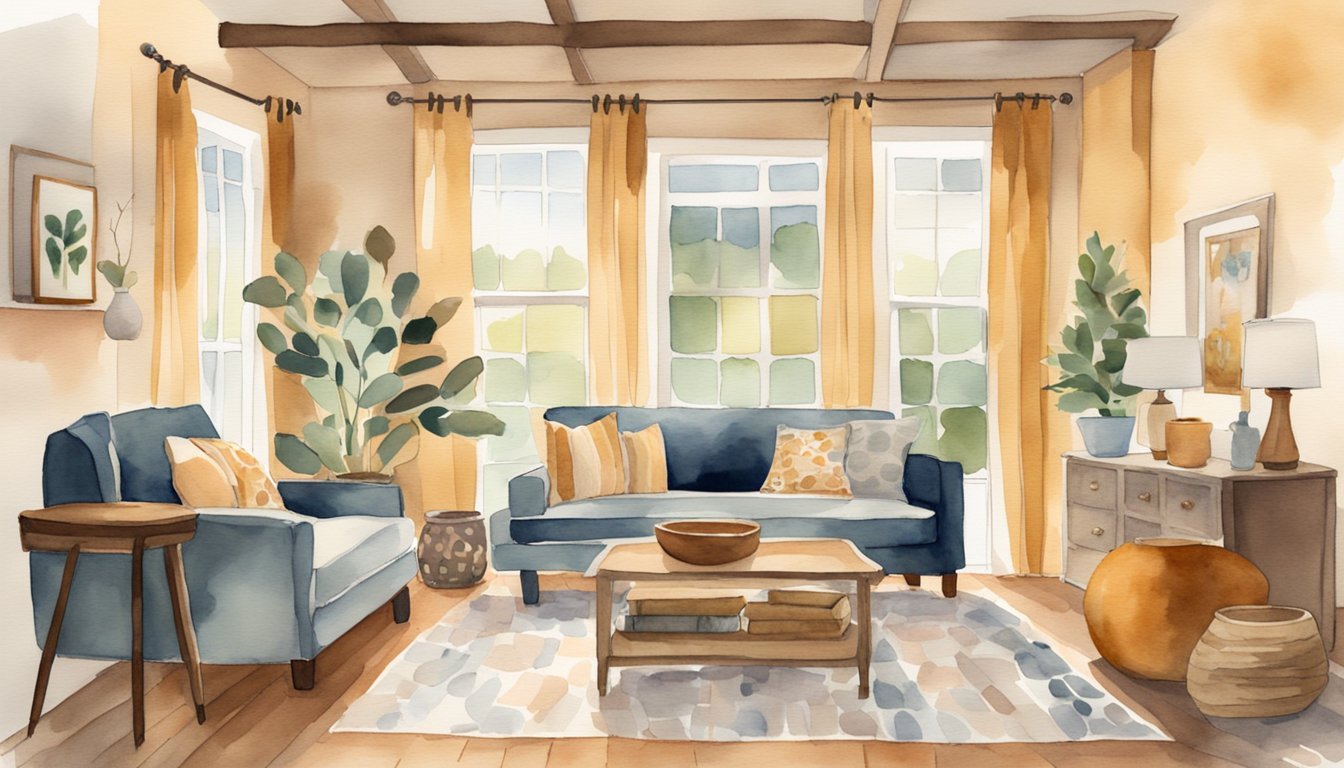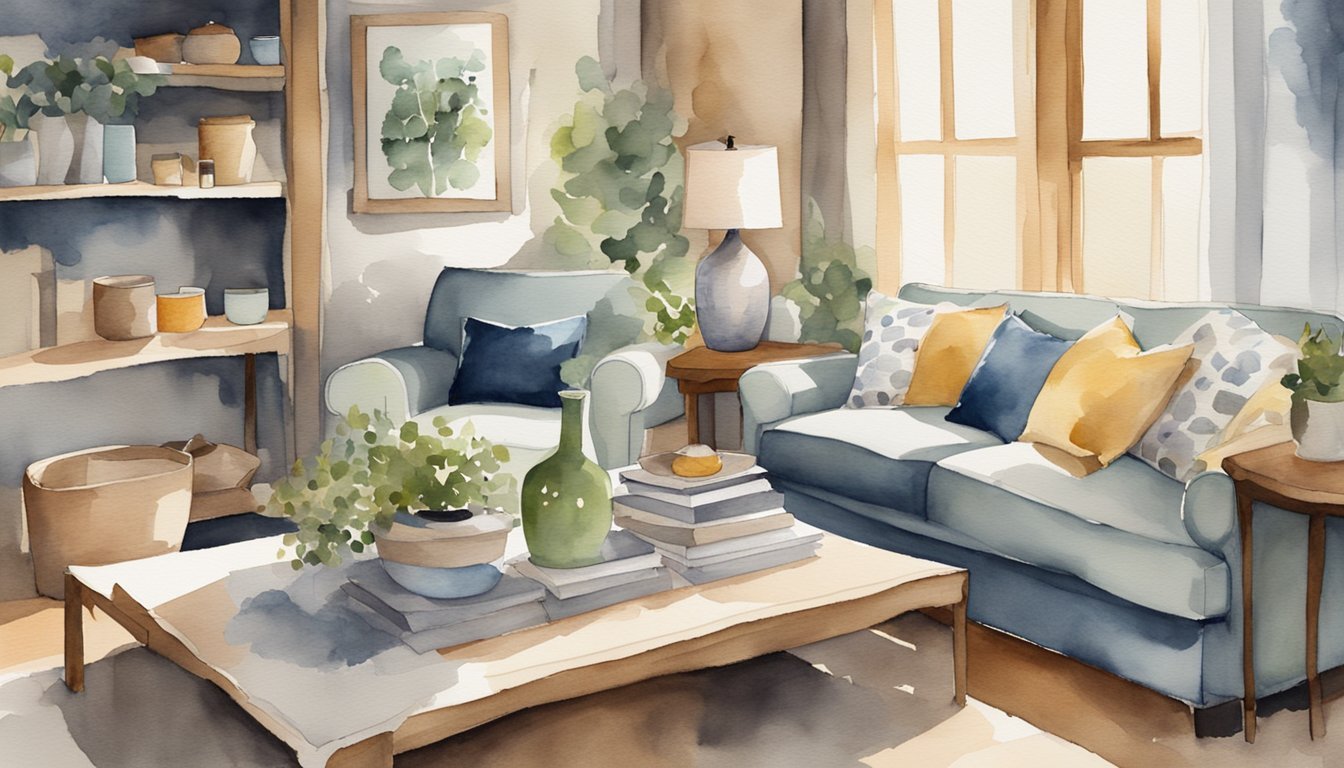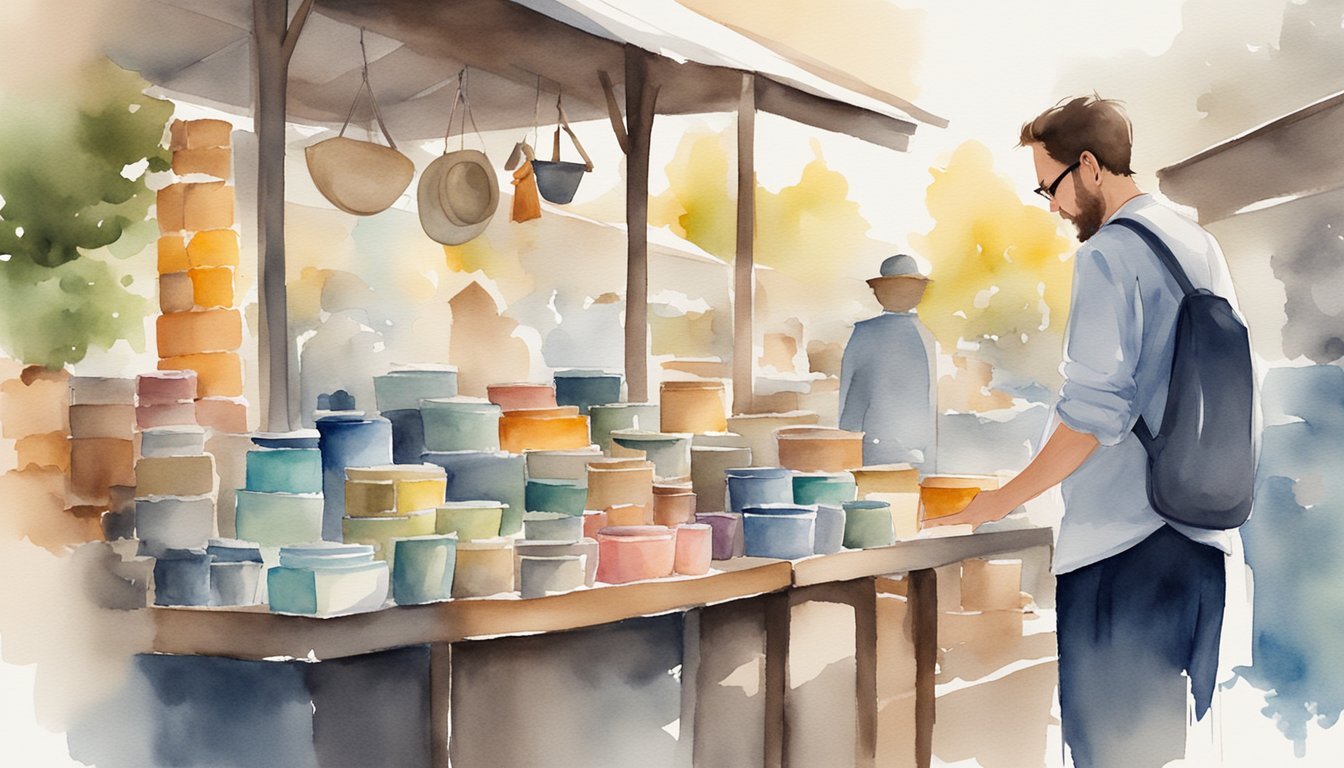Handcrafted Home Decor: Your Next Side Hustle

If you’re looking to add a personal touch to your living space, handcrafted home decor could be the perfect side hustle for you. Handcrafted pieces not only bring uniqueness and charm to your home, but they also allow you to support artisans and their stories. From handmade textiles to vintage furniture, you can create a warm and inviting atmosphere.

You might start with handmade home decor like fall wood signs or botanical prints.
Maybe you want to elevate your space with a handcrafted wooden tray.
These unique items offer character that mass-produced items simply can’t match.
Accessorizing with handcrafted pieces or integrating vintage elements can transform any room.
If you’re inspired, setting up your own online store to sell artisan crafts could be your next big step.
Social media can help you reach more customers and share the unique stories behind each piece.
Key Takeaways
- Handcrafted home decor can be a creative side hustle.
- Unique items bring personal charm to your living space.
- Selling online and using social media expands your reach.
The Appeal of Handcrafted Decor

Handcrafted decor pieces have a unique charm that manufactured items simply can’t match.
They often showcase the skill of their creators and are made with sustainable, eco-friendly materials.
Celebrating Artisanship
Handcrafted decor highlights the talent and dedication of artisans.
Each piece tells a story, reflecting the love and skill involved in its creation.
Whether it’s a wooden tray or a decorative candle holder, the quality of workmanship is evident.
Unique items add character to your space, making it feel personal and welcoming.
They are often one-of-a-kind, ensuring no one else has the same piece.
This is especially appealing if you’re looking for something special and different from what mass-produced items offer.
Artisan products can even provide inspiration to those considering a side hustle.
Selling handmade goods can be a fulfilling way to turn your passion into profit.
Sustainability and Eco-Friendliness
Choosing handcrafted decor often supports sustainable practices.
Artisans tend to use eco-friendly materials that reduce environmental impact.
This can include recycled metals, reclaimed wood, or natural fibers.
By opting for these goods, you contribute to a greener planet and support small businesses focused on sustainability.
Handcrafted items are usually built to last, meaning you’ll be less likely to replace them frequently.
This longevity reduces waste, which is a win for the environment.
Plus, knowing that your decor choices are eco-friendly adds a feel-good factor every time you admire your space.
Giving some thought to the origins of your home furnishings can make a big difference.
Starting with Handmade Textiles
Handmade textiles bring a unique touch to your home decor.
They offer a blend of craft, comfort, and style that can transform any space.
Throw Pillows and Curtains
Throw pillows and curtains are great starter projects if you’re interested in handmade home decor.
These items can change the look and feel of a room without much effort.
Handcrafted throw pillows, like those from House of Cindy, can add vibrant colors or subtle elegance to your seating areas.
You can find pillows made from a variety of materials, such as organic cotton or linen.
They are often made in small batches by skilled artisans, ensuring each piece is unique.
For curtains, consider handwoven fabrics that add texture and dimension to your windows.
Sites like Etsy offer a wide range of handmade curtains that can match any decor style, from modern to bohemian.
Curtains can be a bit more involved, but they offer a big impact on a room’s aesthetic.
Rugs and Blankets
Rugs and blankets are other excellent handmade textile projects that offer both visual appeal and practical comfort.
Handwoven rugs, like the ones from Cultural Cloth, can serve as a centerpiece in your living room or bedroom.
These rugs are often crafted from natural fibers like wool, giving them a soft yet durable quality.
They also come in a variety of patterns and sizes to suit different spaces.
Blankets are another fantastic addition to your home.
They provide warmth and can be draped over sofas or beds for added style.
Artisans, such as those featured by House of Cindy, often use eco-friendly materials to create blankets that are both comfortable and sustainable.
By focusing on these key textile items, you can easily start a side hustle in handmade home decor, attracting customers who appreciate unique, quality pieces.
Accessorizing with Handcrafted Pieces

Incorporating handcrafted pieces into your home can add unique personality and flair to your space.
Handcrafted items like ceramics, pottery, baskets, and wall hangings offer individuality that mass-produced items simply cannot.
Ceramics and Pottery
Ceramic pieces, such as vases, bowls, and sculptures, can elevate your home’s look while adding a personal touch.
You might find these items with hand-painted designs or distinctive glazes.
Each ceramic piece is typically one of a kind, made by artisans who pour their creativity into every item.
Key Benefits:
- Unique Designs: Each piece has its own flare, giving your home a distinct look.
- Functionality: Many ceramics are both decorative and functional, like serving bowls or flower vases.
- Artisan Craftsmanship: You support local artisans and get high-quality items made with care.
Consider using ceramic vases to hold fresh flowers on your dining table or hand-painted bowls as a centerpiece.
Baskets and Wall Hangings
Baskets and wall hangings can add texture and warmth to your home decor.
Baskets made from natural materials like wicker or seagrass are functional and stylish.
Wall hangings, such as tapestries or woven art pieces, add visual interest and can be conversation starters.
Key Benefits:
- Versatility: Baskets can be used for storage or as decorative items.
- Texture Addition: Woven items add a tactile element to your decor.
- Artisan Stories: Each piece often has a story behind it, reflecting the artisan’s culture and techniques.
Using a woven tapestry as a focal point on a blank wall or placing a large basket next to your couch for cozy throws makes your space homey.
Accessorizing with handcrafted items can also be a fun side hustle.
You can support artisans by reselling their work or even start making your own pieces to sell online on platforms like Etsy, where handcrafted home decor is popular.
Furniture as a Statement

Using furniture as a statement in your home decor can give your space personality and flair.
Whether you’re looking at tables and chairs or bookcases and shelving, the right pieces can make a bold impact and convey a unique style.
Tables and Chairs
When choosing tables and chairs, consider pieces that stand out and reflect your taste.
A handcrafted mission coffee table can be a central piece in your living room.
Look for tables with intricate designs or unique materials, like a reclaimed wood dining table.
Chairs can also make a statement.
Opt for chairs with bold fabrics, vibrant colors, or interesting shapes.
Dining chairs with high backs or bar stools with industrial accents can add a stylish touch to your home.
Mix and match different pieces to create an eclectic look that feels curated and personal.
Don’t be afraid to experiment with different styles and textures to find the perfect combination that expresses your individuality.
Bookcases and Shelving
Bookcases and shelving are not just practical storage solutions but can also serve as eye-catching elements in your decor.
A stately bookcase with detailed carvings or an open shelving unit with a modern design can both be focal points in a room.
Arrange your books and decorative items creatively.
Mix different heights and textures to avoid a monotonous look.
You can also use bookcases to display art pieces, family photos, or travel souvenirs.
Consider the proportions of your shelving units.
Ensuring that they fit well within your space will help maintain a harmonious balance.
By thoughtfully choosing and arranging these pieces, you can create a visually interesting and functional display.
Integrating Vintage Elements

Adding vintage elements to your handcrafted home decor can create a unique style that’s full of personality.
This process includes carefully selecting the right vintage pieces and learning how to mix and match them with modern items.
Selecting Vintage Pieces
When choosing vintage items, focus on pieces that stand out and speak to your personal style.
Look for furniture with great details, like carved wood or intricate designs.
Small accessories, such as vintage mirrors, picture frames, or lamps, can make a big impact too.
Hunting for the right vintage pieces can be part of the fun.
Visit local flea markets, thrift stores, and online marketplaces.
Finding a one-of-a-kind item that fits perfectly in your space is incredibly rewarding.
Keep an eye out for quality.
Check for solid construction and original finishes.
Items with minor wear and tear can add character, but be cautious of anything that looks too worn or damaged.
Mix and Match
Once you’ve collected your vintage items, it’s time to incorporate them into your current decor.
Mixing vintage with modern styles can create a balanced and inviting space.
Start by pairing a vintage piece with modern counterparts.
For example, a mid-century modern coffee table can look great with a contemporary sofa.
Don’t be afraid to experiment with color and texture.
Complement a vintage wooden table with sleek, modern chairs, or add a pop of color through vintage cushions.
This layering of styles adds depth and interest to your home.
Always strive for balance.
Too many vintage items can make a space feel outdated, while too few might not make a strong enough statement.
By carefully selecting and thoughtfully mixing your vintage pieces, you can create a unique and stylish space that reflects your personality.
Discovering Artisans’ Stories

Handcrafted home decor isn’t just about unique pieces; it’s about the people behind them.
You’ll learn about their craftsmanship, hear personal stories, and discover how they create their one-of-a-kind items.
Craftsmanship Stories
Many artisans pour their heart and soul into their work.
These skilled individuals often start as hobbyists, turning their passion into a side hustle.
For example, a woodworker might have a day job but spends evenings crafting intricate wooden sculptures.
Their creativity shines through each piece.
You might find hand-carved items that reflect their culture or personal experiences.
Each piece tells a story, adding depth and meaning to your home decor.
Personal stories from artisans, such as those crafting for Sweetheart Gallery, highlight the dedication and skill they bring to their craft.
Artisan Interviews
Hearing directly from artisans gives a deeper connection to their work.
Interviews can reveal the challenges they face and what inspires them.
For example, many artisans use sustainable practices, as seen with those from Indian Artisans.
These interviews often showcase their journey from a simple hobby to a thriving side business.
Understanding their stories enriches the appreciation of their work.
Artisans from sites like Handcrafted Home offer insights into the creative process, delivering not just products but a piece of their world.
Setting up an Online Store
Starting an online store for your handcrafted home decor can be an exciting side hustle.
You need to pick the right platform and make sure your products are presented in the most appealing way possible.
Choosing a Platform
The first step is choosing the right platform for your online store.
Sites like Etsy are popular for handcrafted items, allowing you to reach a dedicated audience.
Etsy charges listing fees but offers a built-in community and ease of use.
If you prefer more control, consider setting up your store on Shopify or WooCommerce.
Shopify is user-friendly and offers many themes and plugins.
WooCommerce is a great choice if you already have a WordPress site.
Both platforms allow you to customize your store and handle payments securely.
Think about what features are most important for your business.
If you want to sell items internationally, make sure the platform supports different currencies and languages.
If you plan to have sales or discounts, check if the platform has those capabilities.
Presentation and Photography
How you present your products can make a big difference in your sales.
High-quality photos are crucial for attracting customers.
Use a good camera and natural lighting to get the best shots of your items.
Take multiple photos from different angles to show off all the details.
If you sell on Etsy, it’s helpful to include photos that show the size and scale of the item, like placing it next to a common object for comparison.
This gives buyers a better idea of what to expect.
Write clear and detailed descriptions.
Mention the materials used, dimensions, and any special care instructions.
Use keywords that customers might search for, like “handcrafted” or “vintage home decor”.
A well-written description combined with excellent photos can significantly boost your sales.
The Role of Social Media

Social media plays a huge part in helping you sell handcrafted home decor as a side hustle.
It allows you to reach potential buyers and establishes your brand’s presence in a vibrant community.
Connecting with Buyers
Social media platforms like Instagram and Pinterest are amazing tools for connecting with potential buyers.
You can post pictures of your handcrafted items and use hashtags to reach a larger audience.
Don’t forget to engage with your followers by replying to comments and messages.
YouTube and TikTok can also help you make video content showing your creative process.
This helps potential buyers feel more connected to your work.
People love watching how things are made, and it can encourage them to purchase your creations.
Facebook groups are another great way to connect with people interested in handcrafted home decor.
Join groups related to your niche and participate in conversations.
Share your online store links and special promotions to drive traffic and sales.
Building a Brand Presence
Having a strong brand presence is essential for any side hustle.
Social media helps you showcase your unique style and quality.
Create a consistent look for your posts by using similar colors, filters, and fonts.
This makes your page easily recognizable.
Collaborate with influencers in the home decor space who can help promote your products.
Influencer marketing can drive traffic to your online store, increasing sales and brand visibility.
Running social media ads can also be an effective way to reach a broader audience.
Target specific demographics who are likely to be interested in your handcrafted home decor.
Regular updates about new product launches, behind-the-scenes content, and customer reviews keep your audience engaged and coming back for more.
Build trust and authenticity by being transparent and genuine in your posts.
For more insights on how social media can shape your home decor business, check out this article on social media’s impact on home design.
It offers valuable perspectives that are useful for any side hustle.
Purchasing Handcrafted Gifts

When selecting handcrafted gifts, you can find one-of-a-kind items that stand out in quality and charm.
Here is a handy guide to help you pick the perfect handmade presents.
Gift-Giving Guide
When it comes to giving gifts, choosing handmade items can make your present feel extra special.
Handcrafted gifts often highlight the artisan’s workmanship, making each item unique.
Look for products that reflect the recipient’s personality or interests.
Shops like Uncommon Goods and Etsy offer a wide range of handcrafted items.
Whether it’s a hand-carved wooden tray or a beautifully designed ceramic mug, these gifts are often more meaningful.
Consider the product’s quality and durability.
A well-made item lasts longer and shows the care put into creating it.
Also, supporting fair trade items from places like Ten Thousand Villages can help you feel good about your purchase.
Curating a Gift Collection
Creating a collection of gifts makes for an exciting side hustle.
Start by selecting a theme, like kitchen accessories or home decor.
Focus on unique handcrafted items that will appeal to a variety of tastes.
For example, you might include handmade candles, pottery, and textiles.
You could source items from Amazon Handmade or local artisans.
Pay attention to the quality of each item to ensure they meet your standards.
Once you have your collection, you can market these items online or at craft fairs.
Use social media to showcase the artisans’ stories and the quality of their work.
This approach not only highlights the uniqueness of your collection but also supports individual craftsmen.
Ensuring Quality in Craftsmanship

When creating handcrafted home decor, it’s important to focus on high-quality workmanship.
Ensuring quality in craftsmanship involves several specific practices and maintaining rigorous standards every step of the way.
Quality Control Practices
Quality control is essential in producing reliable artisan work.
You should start by selecting the best materials.
For example, using premium, solid woods or textiles ensures durability and longevity.
Next, every stage of the creation process should be closely monitored.
Skilled artisans often check their work frequently to catch and correct mistakes early.
They might measure, sand, or stitch multiple times to make sure everything fits perfectly.
Implementing a final inspection before the product is deemed complete is also crucial.
Look for symmetrical designs, smooth finishes, and clean joints.
These small details set apart high-quality items from lesser ones.
Lastly, consider feedback from customers.
Honest reviews will help you understand where improvements might be needed and keep your work top-notch.
Maintaining Standards
Upholding consistent standards ensures your handcrafted items remain exceptional.
Start by setting some clear guidelines for your work.
This might include rules about the types of materials you accept or specific techniques you use.
Continuous learning is vital.
You should stay updated with the latest tools and methods in your craft.
This helps in maintaining high standards and improving your skills over time.
It’s also helpful to collaborate with other artisans.
Sharing great techniques and ideas can inspire you and bring new quality control insights into your own work.
Don’t rush the process.
Quality craftsmanship often requires patience and dedication.
By taking your time to carefully handcraft each piece, you ensure it meets the high standards you’ve set.
Ensuring quality in craftsmanship requires a diligent approach, attention to detail, and a commitment to excellence.
Questions and Support

Running a handcrafted home decor side hustle means you’ll often deal with customer questions and the need for strong support after sales.
Let’s break down what you need to ensure smooth operations and happy customers.
Customer Service
Customer service is crucial in the world of handcrafted decor.
People will have many questions about your products.
They might ask about the materials, the crafting process, or even customization options.
Make sure you respond quickly and clearly.
You can use FAQs on your website to cover common queries like shipping times and return policies.
If someone asks how you make a slipcover, a detailed FAQ or tutorial can help.
You can see an example of this on Willow Bloom Home Blog’s section on frequently asked décor questions.
Use both email and social media for customer interactions.
Social media, in particular, can show off your handcrafting process and answer questions in real-time.
Good customer service is about being friendly, informative, and accessible.
After-Sale Support
After-sale support ensures that your customers stay happy even after receiving their items.
Always follow up with your buyers to see if they are satisfied with their purchases.
Provide clear instructions on how to care for handmade items to prevent any damages.
For instance, if you sell macramé art, offer advice on how to clean and maintain it.
This kind of support not only solves potential issues but also builds trust.
Also, have a simple and fair return policy.
Address any complaints quickly and efficiently.
By taking care of your customers’ needs even after they’ve bought your products, you can foster loyalty and encourage repeat business.
Analyzing trends from online guides like those from Curators Cart can also help you improve your after-sale strategies.
They emphasize the importance of handcrafted items carrying unique stories and the value of making customers feel special with their purchases.
Frequently Asked Questions
Find quick and creative ways to enhance your living space with handcrafted decor.
Discover resources for inspiration, budget-friendly tips, and ideal materials for DIY projects.
What are some easy DIY projects for sprucing up my living space?
Simple projects like creating macramé wall hangings or upcycling glass jars into candle holders can add charm to your home.
These projects require minimal supplies and can be completed in an afternoon.
Where can I find inspiration for handcrafted decor?
You can explore ideas on websites like Handmade Home Decor, Pinterest, and Instagram.
These platforms offer a wealth of photos, tutorials, and step-by-step guides for various projects.
How can I make my own home accessories without spending a lot?
Repurpose items you already have, such as turning old t-shirts into colorful pillows or using leftover wood to create rustic shelves.
Thrift stores and dollar stores are also great places to find inexpensive materials.
What are the best materials to use for homemade decorations?
Using natural materials like wood, rope, and fabric can give a warm and cozy feel to your decor.
Items like mason jars, reclaimed wood, and old fabrics are not only affordable but also versatile for various projects.
Can you suggest budget-friendly handcrafted decoration ideas?
Consider making custom beach towels, blankets, or even door mats.
These projects typically don’t require many materials and can be a fun way to personalize your space.
Check out some affordable options at Handcrafted Home.
What tips do you have for someone starting a DIY home decor project?
Start with small projects to build your confidence, and make sure to gather all necessary tools and materials before you begin.
Watching video tutorials can help you understand the process and avoid common mistakes.






